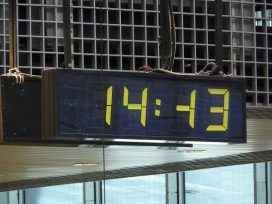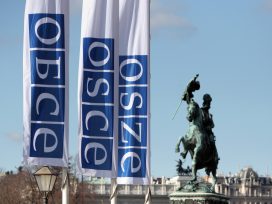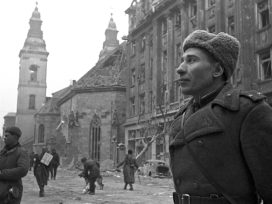Ever since the outburst of protests and political discontent around the December 2011 elections in Russia, the country seems to be on the verge of change. But what kind of change? Will civic unrest, which persists with a varying, but hardly increasing intensity, bring about democratization, or will it induce Putin to introduce measures that strengthen his control? Russian political analyst Nikolay Petrov presents his reading of recent developments.
Elections pose a serious challenge for hybrid regimes like the Russian one. One would not expect that the Kremlin cares much today about the 2016 elections, but this is in fact the case. The political crisis, which begun on the eve of the 2011/2012 electoral cycle, has not come to an end yet. As authorities did not manage to increase their legitimacy in those elections, they are now forced to carry on with populist politics. While the political protests of an active minority of citizens continue, and while the Kremlin keeps using the conservative majority as its base of support, the situation in Russia starts resembling ongoing, if not permanent, electoral campaigning.
Given the political turbulences, early parliamentary elections (that is, before 2016) cannot be excluded. A deepening of the political crisis some years before the presidential elections scheduled for 2018 (with the possibility of the replacement of the leader) is even more probable. Elections for the Moscow city council are scheduled for 2014, and they will certainly have importance at the national level, as the capital is leading the way in the protest electoral behaviour.
From May 2012 onwards, with mass political protests continuing despite the elections having passed, the Kremlin’s actions, including lawmaking, have become an increasingly reactive “tightening of screws’. In his long post-inauguration interview on 6 September 2012, Putin did not say a word about political reforms. It seems that no final decision has been taken yet about how to transform the political system. The final decisions are to be made, on the one hand, in light of the results of the regional elections in October and, on the other hand, when it becomes clearer whether political protests will keep growing, or fade.
The systemic crisis
Russia is now in a deep multi-dimensional systemic crisis. The political crisis manifests itself in the decreasing legitimacy of the government, which is very much based around individuals and lacks strong institutions (Putin’s weakening shows a crisis of the system of delegative democracy), and in the inability of the authorities to fix the problem of political protests. The economic crisis is apparent when we look at the growing difficulties for both elites and society as a whole. For the former, stagnation and the shrinking “pie’ to be shared mean that the new “hungry’ elites cannot be fed without hurting old ones; as a result, tensions and inner-elite conflicts are on the rise. For society, they reveal the inability of the government to continue with populist politics and the need to cut off some of the social benefits, which will provoke further socio-economic protests. The management crisis becomes obvious when we see the incapacity of the government to carry through the needed reforms which were already announced, including pension reform, communal services reform and the expansion of Moscow. The government formed after Putin’s inauguration in May is good in terms of keeping the balance between major elite groups, but does not represent a team capable of either spelling out or implementing any strategy. It becomes paralyzed and incapable of taking any serious decisions when interests of different groups collide.
While it is clear that authorities cannot survive six more years without solving the burning problems, the question is for how long they can muddle through.
Trends
There are a number of important coinciding trends in Russia today.
Firstly, the phase of initial redistribution of property in favor of Putin’s elites is over, so a redistribution mechanism should be established to feed hungry young elites, and this should happen without provoking uncontrolled inner-elite conflicts, which is not an easy task. For the first time in the 12 years of being in power, Putin has to face the fact that – due to the prolonged economic crisis – the national wealth that is shared among the business and political elites has ceased to grow, and will probably not start to grow again anytime soon. The principle of taking wealth from others and sharing it with your most loyal servants, which worked so well during Putin’s first two presidential terms, no longer works: there simply is not enough to share. To avoid an unruly battle, Putin has to carry out some redistribution: to give the new, hungry members of the elite a piece of the pie, he has to take some from the old members. Judging by the scale of the reshuffling in the security and law enforcement bodies, primarily in the Internal Affairs Ministry, there is no shortage of new members of the elite who want a piece of the pie. The Kremlin has tried to present this redistribution of wealth as an “anti-corruption campaign”, and the proposed legislation to bar politicians from shifting assets abroad is just a part of this strategy.
Secondly, there is the nomenklatura – elite problem. The existing mix of a nomenklatura and an elite personnel system lacks reproduction mechanisms, as these systems are aging and no longer capable to deliver. The current Russian wishy-washy system was in large part inherited from the Soviet nomenklatura apparatus, and thus preserves a certain similarity with its predecessor. However, today there are no resources dedicated to Soviet-style repression, and without this “stick” – that is, without an external mechanism of control and selection – today’s “nomenklatura” is inevitably transformed into an elite.
The efficiency of the state personnel is declining rapidly, urging for a choice to be made between a nomenklatura-based reproduction mechanism, which would mean a system of purges that Putin’s elites would certainly not welcome, and an elite-based reproduction, which would mean growing political competition and diminishing direct interference.
Further, there is the centre – regions problem. Shifts in relations between the centre and the regions can be described as oscillation, with the pendulum moving in the direction of the centre throughout most of Putin’s years. Starting from mid-2011, however, the pendulum has changed direction and is moving towards the regions. The role and influence of the regions and their political elites are increasing, thus leading to a gradual large-scale reconfiguration of power.
The move from a “federation of corporations” to a “federation of regions” is another important trend. Putin’s system of a “verticalization of power” has reached its logical limit, hence a phase of horizontalization is coming, which entails the dismantling of the princedoms-corporations (an almost medieval system with autonomous or semi-autonomous players) and their transformation into princedoms-regions.
And finally, the crisis of energy superpower politics and the deterioration of Russia’s image in the West create a new background for foreign policy and affects domestic politics as well.
Ignoring these challenges, the Kremlin and Putin continue to act within the old paradigm, either not noticing the fast pace of change, or incapable of reacting adequately to it, thus provoking the phenomena of crisis.
Putin’s role
After 12 years in power, Putin seems to be “too old” to learn to adjust to the new situation. His declining popularity puts him in a position where he is not capable to undertake the necessary reforms even if he understands the need. Putin’s growing inability to fix the most important systemic problems will sooner or later force the elites to choose: either to remain loyal to the leader (currently in a process of transformation, from the biggest provider of stability and legitimacy into an obstacle to change); or to secure the elite’s survival by replacing him. The problem for the elites is that they cannot replace Putin in his capacity as a supreme arbiter able to maintain the balance between major clans, because a candidate from any clan is unacceptable to all others. The way out is to distribute the powers concentrated in Putin’s hands among major groups. But the system, based around individual personalities, cannot offer any guarantee that their respective agreements will be kept. One can expect that, in order to solve this dilemma, the elites create an organ à la Politbureau, where the interests of its various groups are represented and compromises can be reached.
Although the numerous replacements in the government do not play an essential role, there are two spheres where we see crucial shifts: the gas sector and the “power block” of the Interior Ministry and the security service. Being the backbone of the system, they are personally controlled by Putin. The forms of this control, however, underwent serious change in 2012. Putin has taken control over the state security apparatus personally, refusing the role of moderator that had been suggested by the security service, FSB. The emphasis was put on the Interior Ministry, a step which – in light of the mass protests – looks rational. The federal leadership of the Ministry has been replaced by new appointees from the regions, who – unlike in the past – are responsible not to their superiors from the FSB, but to Putin personally.
Igor Sechin, Putin’s most trusted ally, who was considered to be the informal leader of the “siloviki” till 2007, continues to be in charge of the oil and gas sector through the newly established Commission on Strategic Fuel and Energy Sector Development and Ecological Security. This commission, where heads of different elite clans are represented, resembles a Politbureau for the sector.
The near future
The near future will be defined first of all by the 14 October 2012 elections and by the protests: the continuing political protests in the big cities, and the emerging socio-economic protests in the provinces. Both reveal a serious mistake of the Kremlin, which has chosen the wrong tactics of fighting the consequences rather than the causes of the protests, while not being able to even successfully suppress the demonstrations.
There are three main ingredients of the reactive current strategy pursued by the Kremlin: to avert the escalation of the mass protests; to prevent a split in the elites and secure their continuous loyalty; and to maintain the support of the conservative majority for the regime against the oppositional minority.
The way the Kremlin tries to suffocate the mass protests is by pre-emptively threatening their leaders and trying to discredit them. This strategy reveals a lack of understanding of the nature of the protests: the Kremlin apparently believes that the protests are organized by a few instigators, whereas in fact they have a broad basis. Not only do these tactics not help end the protests, it can even prove to be counterproductive, such that dialogue with the protesters becomes unavoidable.
As to the other two tactics used, the Kremlin has surprised many with its recent legislative initiative that would prohibit officials from owning property or opening bank accounts abroad. This could be seen as an attempt to offer some kind of liberal, anti-corruption gesture in the midst of a whole series of recently passed repressive laws, such as the law labelling foreign-funded nongovernmental organizations as “foreign agents”. Most likely, however, the anti-corruption campaign is an attempt to further bind United Russia at all levels, in order to avoid the emergence of defectors or a split in the elite.
This is precisely where the campaign to discredit the Just Russia Deputy Gennady Gudkov comes into play. The Kremlin is using him as an example to show all disloyal and doubtful people what can happen to them if they criticize President Vladimir Putin and the ruling regime too sharply.
Finally, playing the conservative card, the Kremlin significantly decreases its own room for manoeuvre in the future, while provoking a radicalization of both the supporters of the regime and the opposition, including radical nationalism and other forms of extremism.
The October elections
All eyes focused on the 14 October regional elections to see whether the Kremlin start to modernize the political system after December’s State Duma vote and the resulting protests had exposed a crisis of confidence in the authorities. The stakes grew higher when Vladimir Putin’s decisive victory in the March presidential election failed to strengthen the Kremlin’s authority and the government’s legitimacy slid in subsequent months, raising new questions about its ability to improve the sluggish economy.
By all appearances, the October elections won’t buttress the authorities’ legitimacy in the eyes of the people. Rather than responding to a year of pressing challenges by making the political system more open and competitive, the Kremlin has found new ways to outmanoeuvre the opposition while maintaining its hold on power.
The authorities, realizing that voters during the presidential election would not tolerate the type of brazen falsification of results used in the State Duma elections, used a different tactic in Moscow and St. Petersburg, the two main bastions of protest sentiment. They took maximum advantage of administrative resources while avoiding direct falsification whenever possible.
This time, the authorities found ways to lower voter turnout, made wide use of “spoiler” parties to dilute support for opposition candidates, entered candidates who were obviously unqualified or who generated support before pulling out of the race at the last minute, mobilized masses of state workers to vote for specific candidates, and employed various other tricks. With these measures, the Kremlin managed to achieve the re-election of the incumbent governors in each of the five regions where elections were held, even though some were obviously weak and unpopular.
United Russia made a strong showing in legislative elections in a dozen or so regions and regional capitals. However, it would be naive to interpret that as a victory for the authorities or a comeback after the party’s poor performance in December’s election. United Russia’s greater showing was at least partly the result of fewer candidates having been allowed to run, while the real victor was propaganda, not the Kremlin.
Municipal elections differ significantly from regional elections because local voters base their choices not so much on candidates’ party affiliation as their concrete leadership qualities. As a result, many candidates favoured by the federal government ran on the ballot as independents rather than as United Russia members.
An interesting example can be seen in the Sverdlovsk region, one of the most democratic and therefore challenging regions for the Kremlin. In the mayoral race in Nizhny Tagil, victory went to United Russia candidate Sergei Nosov, who won 90 per cent of the vote. But that landslide was more a result of his personal popularity than of his party membership; United Russia simply pegged him as its candidate because he was the clear favourite. It is revealing that in the nearby city of Degtyarsk, the deputy mayor supported by United Russia lost by a wide margin to the Just Russia candidate. And because United Russia simply lent its support to strong politicians, it is no surprise that its candidates lost in only three of the 17 mayoral races in the region.
Probably a better indicator of United Russia’s real popularity is the legislative elections in four municipalities where the party garnered no more than 50 per cent of the vote in each.
The irony is that by staging elections like those held in October, the authorities actually deprive themselves of the very legitimacy they could gain from honest elections. Of what value is an electoral victory when voters boycott because they see no one worth supporting? Although some in the Kremlin claim that the opposition politicians proved to be unpopular, the real reason for their defeat is that they are prohibited from running in most races.
The authorities face a huge political risk, especially during times of crisis, in depriving the people of a peaceful mechanism for effecting a change of leadership. They are leaving citizens no other option but to dismantle the system entirely in order to bring new people into office.
What the regional elections have demonstrated is that the entire party system is in trouble, not just United Russia. Several recently registered parties simply drowned in the sea of Kremlin tricks and stratagems and succeeded only in biting off a few votes that normally go to the Communist Party and A Just Russia, both of whose opposition stance is questionable. As a result, three of the six regional legislatures elected on 14 October consist of only two parties: United Russia and the Communist Party.
Thus, despite claims by United Russia leaders, the party looks no stronger now than before the elections. What’s more, the other three parties represented in the State Duma now appear to be weaker, largely due to concerted efforts by the Kremlin. Of the 57,000 candidates registered in this month’s elections, only 11,000 candidates were put forward by those three parties combined, while United Russia alone had 22,000. The Patriots of Russia party came in fourth place with 700 candidates. Incidentally, that party acted largely, though not entirely, as a spoiler in the elections, meaning that the Kremlin might one day use it to replace A Just Russia as a spare party of power.
One can say that the results of the regional elections point once again to the need for an overhaul of the political system. But the authorities are unwilling to admit that and appear unable to accomplish it. They are too busy trying to hold on to power today to think about tomorrow – or prepare for it.
Conclusion
To conclude, the Russian political system in its present shape can hardly survive till 2014, and will be either radically transformed from within or replaced by a different system due to its inability to manage the country. The next few years will be marked by two general trends: changes in the relationship between the government and society on the one hand, and between Moscow and the regions on the other. It seems that the Kremlin is determined to defy logic by working against current trends and implementing counterproductive measures that offer little promise for improving the situation in the country.
One can expect growing political turbulences in the near future. At the same time, the Kremlin will have to seek mass support to increase the legitimacy it needs to go forward with political and economic reforms, which by definition goes against the interests of the already existing paternalistic majority. In other words, while trying to fix the most urgent problems, the Kremlin manoeuvres itself into a dead end.
Published 25 June 2013
Original in English
First published by IWMpost 110 (2012)
Contributed by Transit © Nikolay Petrov / IWMpost / Eurozine
PDF/PRINTPublished in
In collaboration with
In focal points
Newsletter
Subscribe to know what’s worth thinking about.
Related Articles
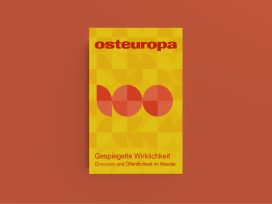
In the spirit of the times and against the grain
Osteuropa 1–3/2025
Osteuropa at 100: Manfred Sapper on the history of the journal from Weimar to the present; Gerd Koenen on a century of German–Russian projections; Katharina Raabe on eastern European literature in translation; Dorothea Redepenning on the bilateral politics of classical.
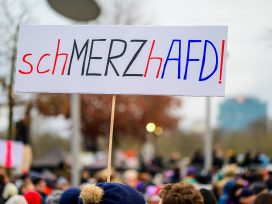
After the catastrophic performance of the traffic light coalition, what Germany needs is a strong, unified government able to provide an antidote to the new fascism. Friedrich Merz must begin by rebuilding trust, writes the editor of ‘Blätter für deutsche und internationale Politik’.

